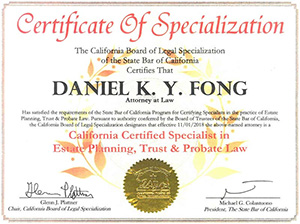Veterans Aid & Attendance
Veterans Aid & Attendance
Aid and Attendance Benefits for Veterans
Serving Clients in Monterey Park and the Surrounding Area
Monterey Park, California Veterans Benefits Law Firm
Many families struggle to provide necessary care for aging or disabled Veterans or their surviving spouses. Unfortunately, most of these families are unaware of an important benefit available through the Department of Veterans Affairs to which their loved ones may be entitled. It is called Aid and Attendance.
For qualifying veterans, Aid and Attendance is paid in addition to the basic pension rate for seriously disabled wartime veterans who have limited or no income, and who are age 65 or older, or, if under 65, who are permanently and totally disabled.
Some key things to know about the Aid and Attendance benefit:
- Aid and Attendance is a pension benefit and is not dependent upon service-related injuries.
- Wartime veterans and their surviving spouses may be eligible.
- Certain medical and financial requirements must be met.
- Aid and Attendance can help pay for care in the home, nursing home or assisted living facility.
The Application Process
Application for Aid and Attendance Benefits is a complex and lengthy process. The forms are available for you to do this yourself, but be advised that if you apply and your application is denied, you must wait a year before you can reapply. For these reasons, many people seek assistance in completing the application. Note: It is illegal for anyone to charge you a fee to help complete the application or file for benefits.
Our office can assist with you with this process – at no cost to you.
The Aid and Attendance Benefit – How Much Could You Receive?
The cost of assisted living, nursing home or home health care can be substantial. In fact, a 2017 survey conducted by Genworth Financial found that the national median monthly rate for a one-bedroom apartment in an assisted living facility runs $3,750, the national median monthly rate for a semi-private nursing home room is $7,148, and the national median monthly rate for a licensed home health aide is $4,099. Aid and Attendance Benefits could help defray these types of costs for qualified veterans and their surviving spouses.
The 2018 Maximum Benefits
- Maximum Monthly Benefit for Surviving Spouse: $1,176*
- Maximum Monthly Benefit for Single Veteran: $1,830*
- Maximum Monthly Benefit for Married Veteran: $2,169*
- Maximum Monthly Benefit for Married Veteran Couple: $2,903*
*Note: these maximum benefit amounts may fluctuate and the actual benefit that is approved may be less.
Who is Eligible to Receive Aid and Attendance Benefits?
There are three aspects of eligibility – Service, Medical and Financial.
Service. The basic service qualification is that the veteran must have served at least 90 days of active military duty, with at least one of those days during wartime (as defined by the Veteran’s Administration). Additionally, the veteran must have received a discharge that was other than dishonorable.
Medical. The veteran or surviving spouse must show that they require the “aid and attendance” of another person to perform the basic activities of daily living. The VA defines the need for aid and attendance as:
- Requiring the aid of another person to perform personal functions required in everyday living, such as bathing, feeding, dressing, attending to the wants of nature, adjusting prosthetic devices or protecting himself/herself from the hazards of his/her daily environment, or
- Being blind or nearly blind, or
- Being bedridden, in that his/her disability or disabilities requires that he/she remain in bed apart from any prescribed course of convalescence or treatment, or
- Being a patient in a nursing home due to mental or physical incapacity.
Financial. Qualifying under the asset test can be tricky. The basic requirements state that the person requesting the benefit must have a financial need. Each application is evaluated individually. The VA considers what it refers to as IVAP – Income for VA Purposes. IVAP is equal to your gross income from all sources, less a portion of unreimbursed medical expenses. If your IVAP is not less than the annual benefit amount, you will not be eligible for benefits.
How Can I Qualify for Aid and Attendance Benefits?
What if you are service and medically eligible, but have too many assets or too much income to qualify? As with any government program, the rules governing eligibility are in a constant state of flux. With federal budgets stretched to the limit with deficit spending, expect the rules governing asset limits to become more strict. This includes any attempts to rearrange your assets and/or income to qualify, which may include re-titling or giving away assets, or establishing a Veterans Administration Aid and Attendance Pensions Benefits Trust. Making these types of changes is may perfectly legal, but doing so properly can be complicated to be effective and not render you ineligible. Beware that some actions taken to qualify for VA benefits could create a penalty period, or perhaps even disqualify you entirely from receiving Medicaid benefits should they be needed.

